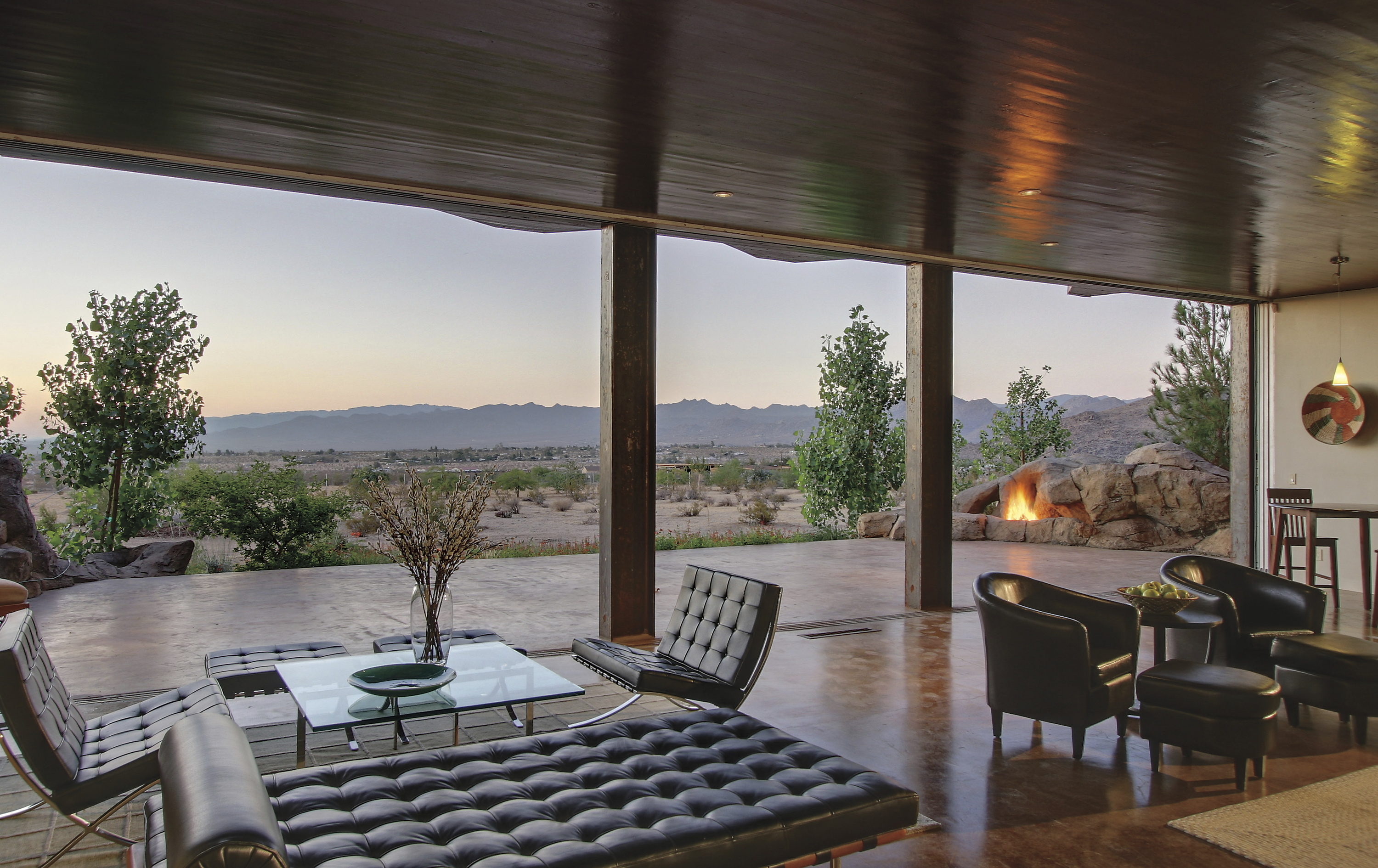
24 Jul Sleight of Hand
Garrett Carlson had his way, landscape architects would be on board long before an architect is commissioned — a complete flip of the building process as it’s conducted now. These days, he explains, by the time landscape architects enter the picture, what they’re presented with is negative space. They inherit what’s left over when the architect is done.
“A lot of people say architects are terrible site planners,” he says. “But they always get in first and have more clout and control over the space than landscape architects do. I’d make sure landscape architects got in first, to design the unit so it’s all positive space.”
Of course, Carlson has made an extraordinary career of transforming negative space into entrancing gardens. After 35 years designing in Los Angeles, his star-studded client list reads like an entertainment business Who’s Who. But something was always missing.
“I was a madman, going 90 miles an hour all the time. When my staff saw me coming, they’d dive for cover,” the athletic, steel-haired 60-year-old says. “In 1990, I gave my office to my partner, and decided from then on to hand-pick clients, dividing my life into roughly 70 percent work and 30 percent play, much to my clients’ dismay. What’s on the horizon this week? I mean, life goes by so fast, who cares if you have a quadrillion dollars in the bank?”
Since then the reformed workaholic has traveled the world, mountain biking, parasailing, scuba diving and fearlessly indulging in his whims. More than 20 years ago, on a plane to Colorado, he noticed a tiny ad for land in a valley in the Sangre de Cristo mountain range. When he flew home at the end of the weekend, he was the owner of 150 acres of Colorado prairie, where he spends five days each month.
More recently he bought land in Joshua Tree, California, a still-funky town in the desert north of Palm Springs, at the gateway into the stunning Joshua Tree National Park. And there he finally got around to scratching the itch he’d had all those years: He built the first of what he plans to be a series of eight houses that are placed on their sites as an integral part of the whole. Carlson wasn’t a complete novice; after finishing landscape architecture school and his apprenticeship, he did a year of architecture school at UCLA, but was forced to leave when his landscape architectural business took off too quickly to postpone.
From a distance, you don’t see the Boulder House. But once you know where to look, you see it rising from the desert floor, as organic as a pioneer prairie house. From the entrance off a dusty country road, all that’s visible is a rusted gate, the tops of its two sides carved to echo the mountain range. Beyond that? Boulders. A large hillock of boulders the same rusty, sandy color of the massive rocks at the mountains’ feet. The pebbled circular drive is anchored by a gnarled, 100-year-old olive tree. The boulders enclose the rear, western-facing wall of the rectangular house, and the sides are encased in rusted corrugated metal. Walk through the door cut into the north side, however, and the main room, which includes an open kitchen, is one with the landscape, lined entirely on the east side by floor-to-ceiling pocket glass doors. Aside from the stunning natural vista of desert floor and mountains, Carlson has planted some 450 trees and 1,000 shrubs.
The ceiling of the main room is lined in gleaming, dark-stained Douglas fir. The floor is cement chemically treated to resemble the earth, then waxed and sealed into a gentle gloss. Push the pocket windows aside and the main room becomes one with the large terrace framed in boulders; on one side a fountain, and on the other a fire pit. As the afternoon light softens into amber, then thins to cool pink, jackrabbits and quail cross the garden on their way to a hidden pond and salt lick. It isn’t until you stroll out into the desert garden and look back that you realize the roof is sod, covered in wildflowers, hardy desert plants and grasses.
The bedrooms are almost an afterthought, but the master bathroom’s windows look out through the boulders, swaying olive branches and desert foliage toward the western mountains, which are snow-capped in winter. The late afternoon light floods through the windows, warming the angles of the bathroom.
The house has a magic that’s calming as Zen. How could what’s basically a 1,700-foot-square rectangle with a sloped roof be so transporting? It’s quite a while before you’re able to concentrate on what’s behind this incredible sleight of hand. The boulders, every single one of them, are faux. The rusted gates and corrugated siding are steel sprayed with muriatic acid, then sealed. To get that mountain vista carved into the half-inch steel gates required laser cuts. The cement floor is 14 inches thick, concealing pods that cool the floor in summer and warm it in winter. The boulders, the siding and the sod ceiling provide energy-saving insulation from the extremes of desert weather. An over-hang above the terrace cuts glare into the main room. One of the major unforeseen expenses of the construction was the structural engineer required to plan the I-beams necessary to hold up the sod roof, which in spots has 18 inches of soil. (The roof can be accessed through the boulders.) The pocket doors are double-glazed. All the plantings are watered by a drip system.
“Gardens make people happy,” Carlson says. “Most designers go for the look. But it’s about creating an environment. Not so much the look, but the energy. How do you get that kind of flow of energy? How do you push energy? If it’s done well, it’s really magic. Something you don’t quite understand, but you feel.”
The Boulder House is such a place. Completely in charge for the first time, Carlson has created a striking weekend home that’s one with its surroundings, firmly anchored in the desert floor. In the past, when he’s created gardens for his clients, he’s regarded the highest compliment to be that the gardens look as though they’ve been there forever. And the Boulder House and its high-desert garden appear to have been there all along.
As much as the house has fulfilled his desire to create in the way he feels a building and its landscape should come together, Carlson isn’t satisfied. He wants to sell the Boulder House and get on with the next one.
“This house is kind of underground,” he says. “The next one will be kind of flying. And I might build a few that are really underground.”
And that will be interesting to see.
Laurel Delp is a writer based in Los Angeles.
- Carlson planted the prairie-style roof of his meditative desert getaway to look as though the house had just risen from the ground. The chemically-rusted corrugated steel skin both insulates the house and blends with the boulders.
- Carlson planted the prairie-style roof of his meditative desert getaway to look as though the house had just risen from the ground. The chemically-rusted corrugated steel skin both insulates the house and blends with the boulders.
- A mirror over the kitchen sink reflects the views.
- Gates carved in the shape of the mountain range open onto a natural-looking mound of boulders, with no hints that this is the house’s western wall.
- The gleaming Douglas-fir ceiling and sealed cement flooring are a rich, muscular contrast to the matte boulders and sere landscape
- The apparently wild landscape was carefully planted with 1,000 shrubs and 450 trees, including mature olives.






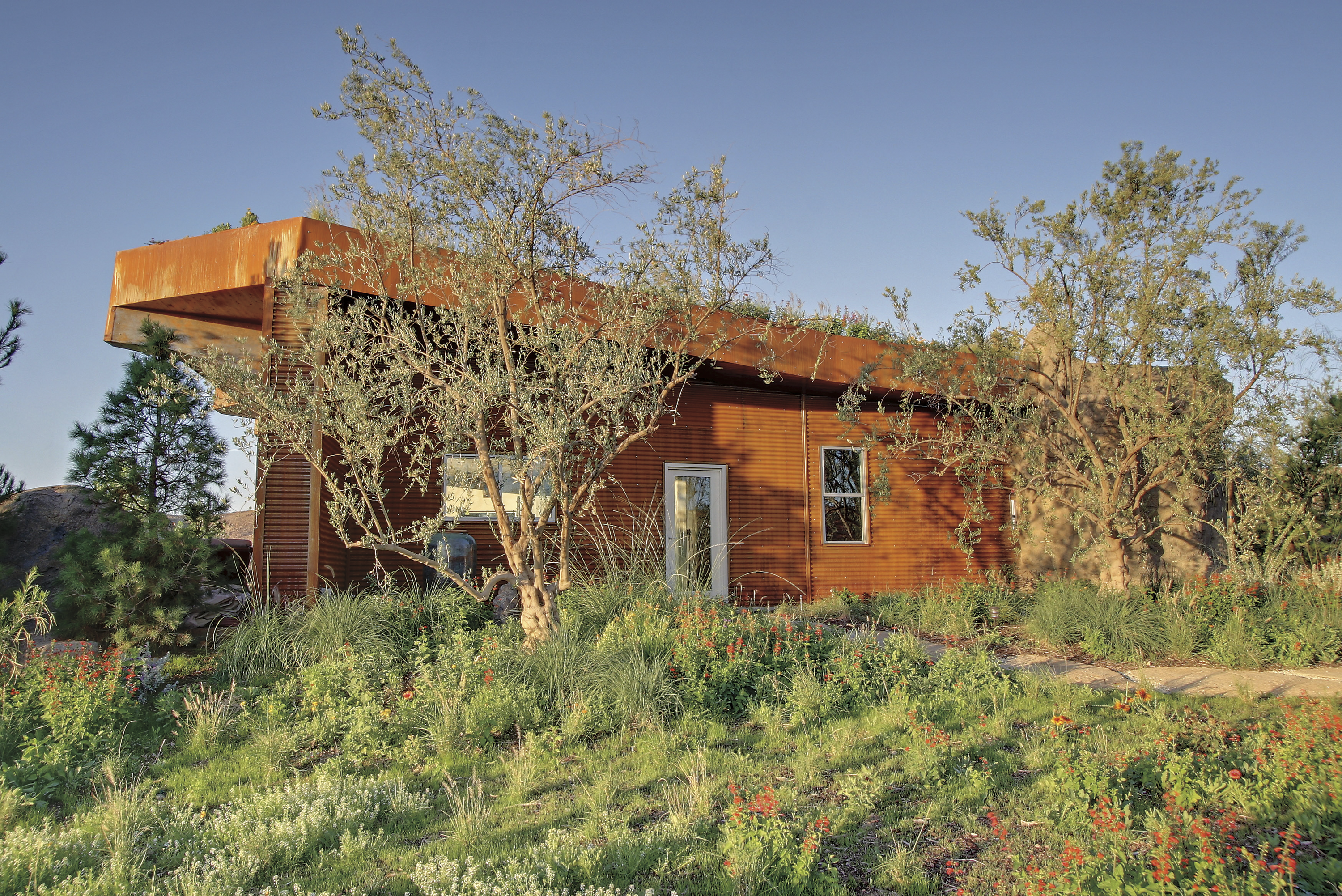
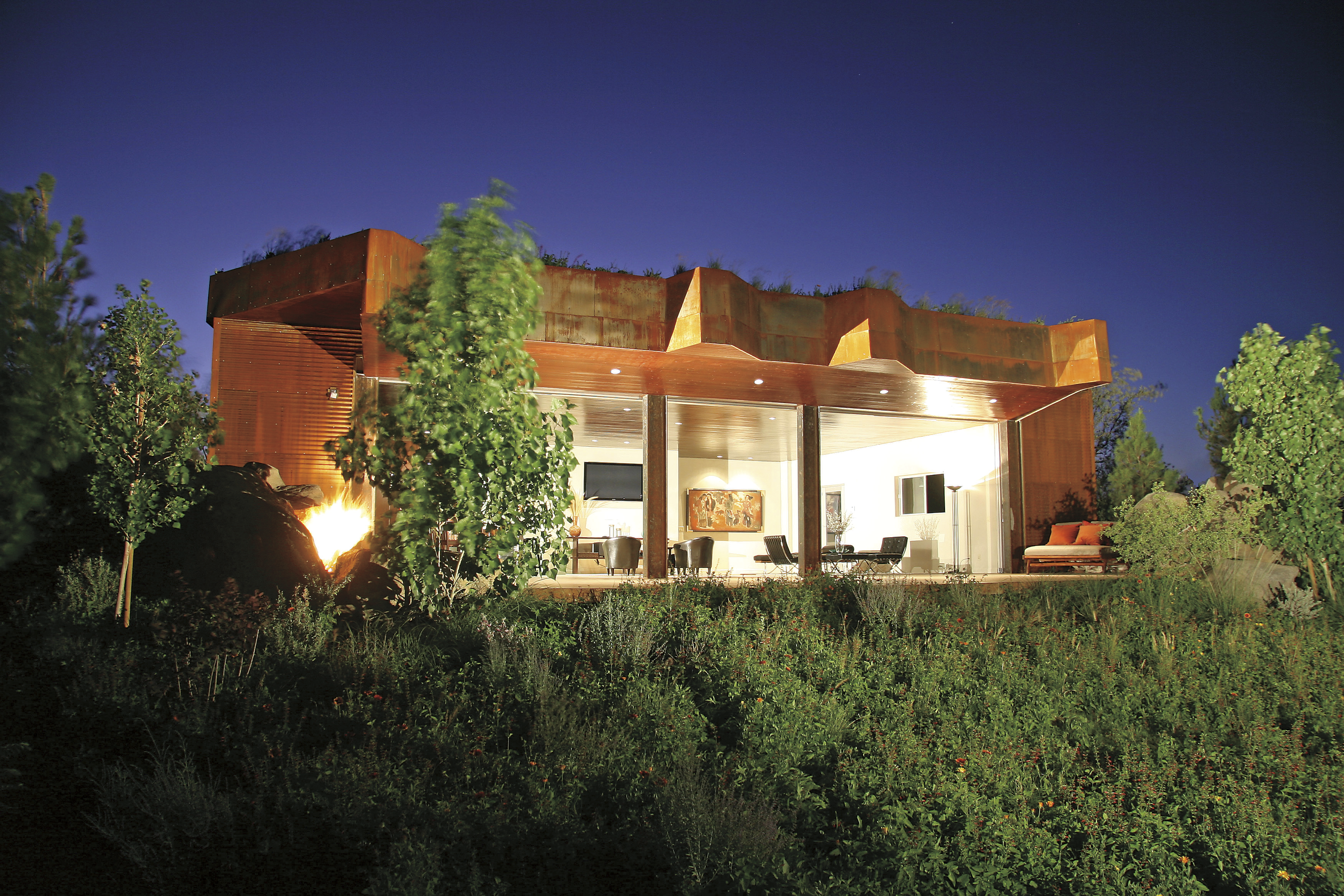

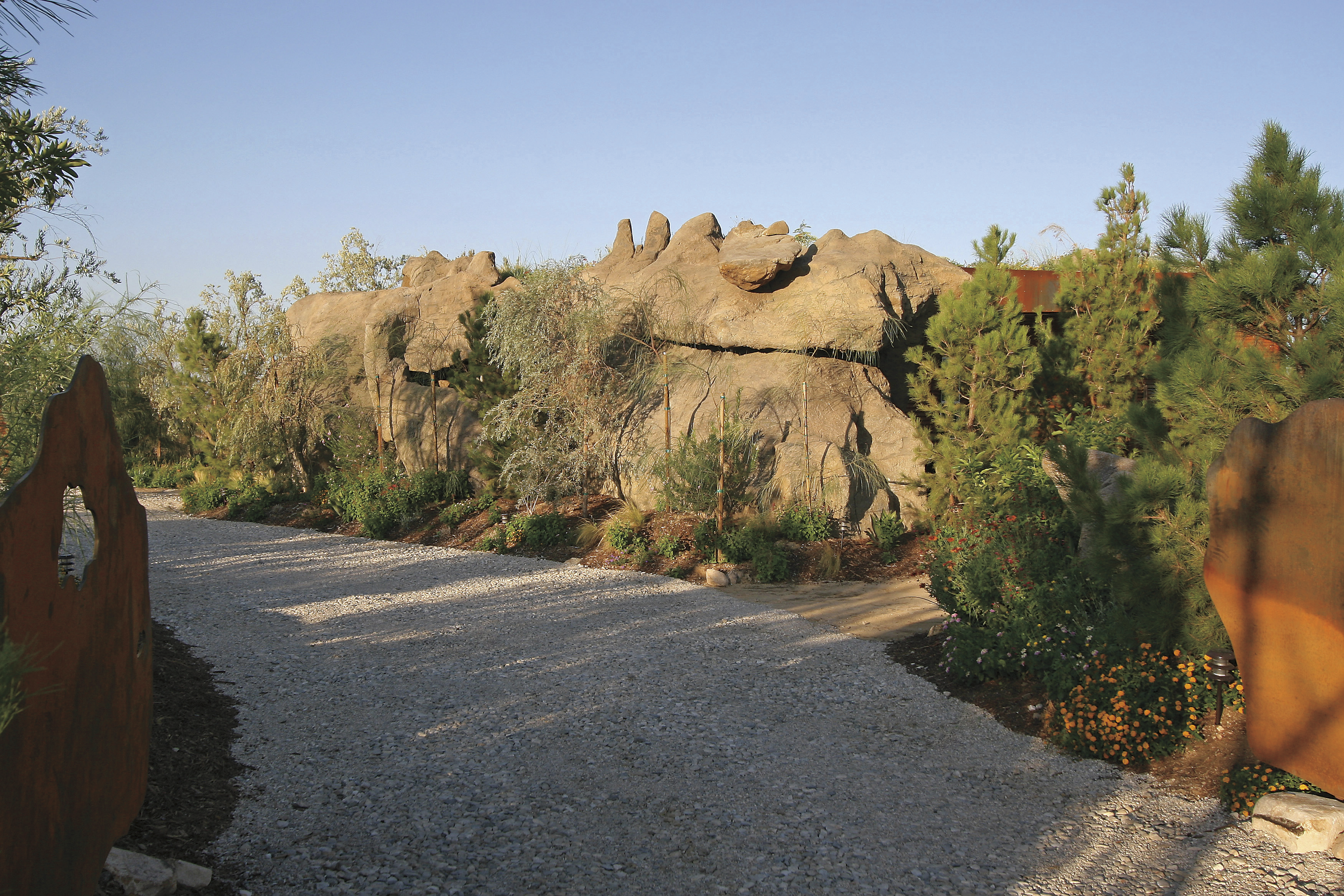
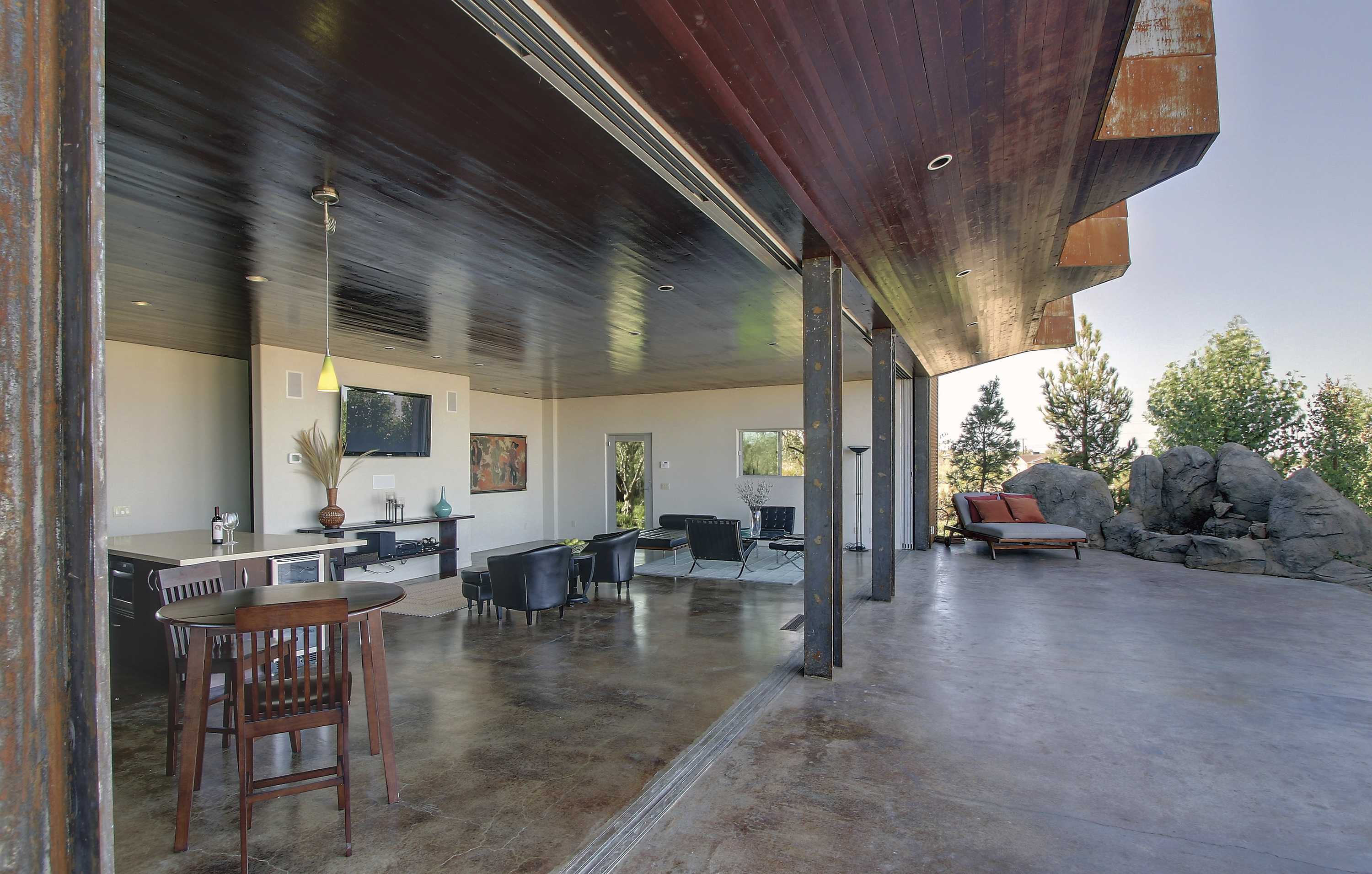
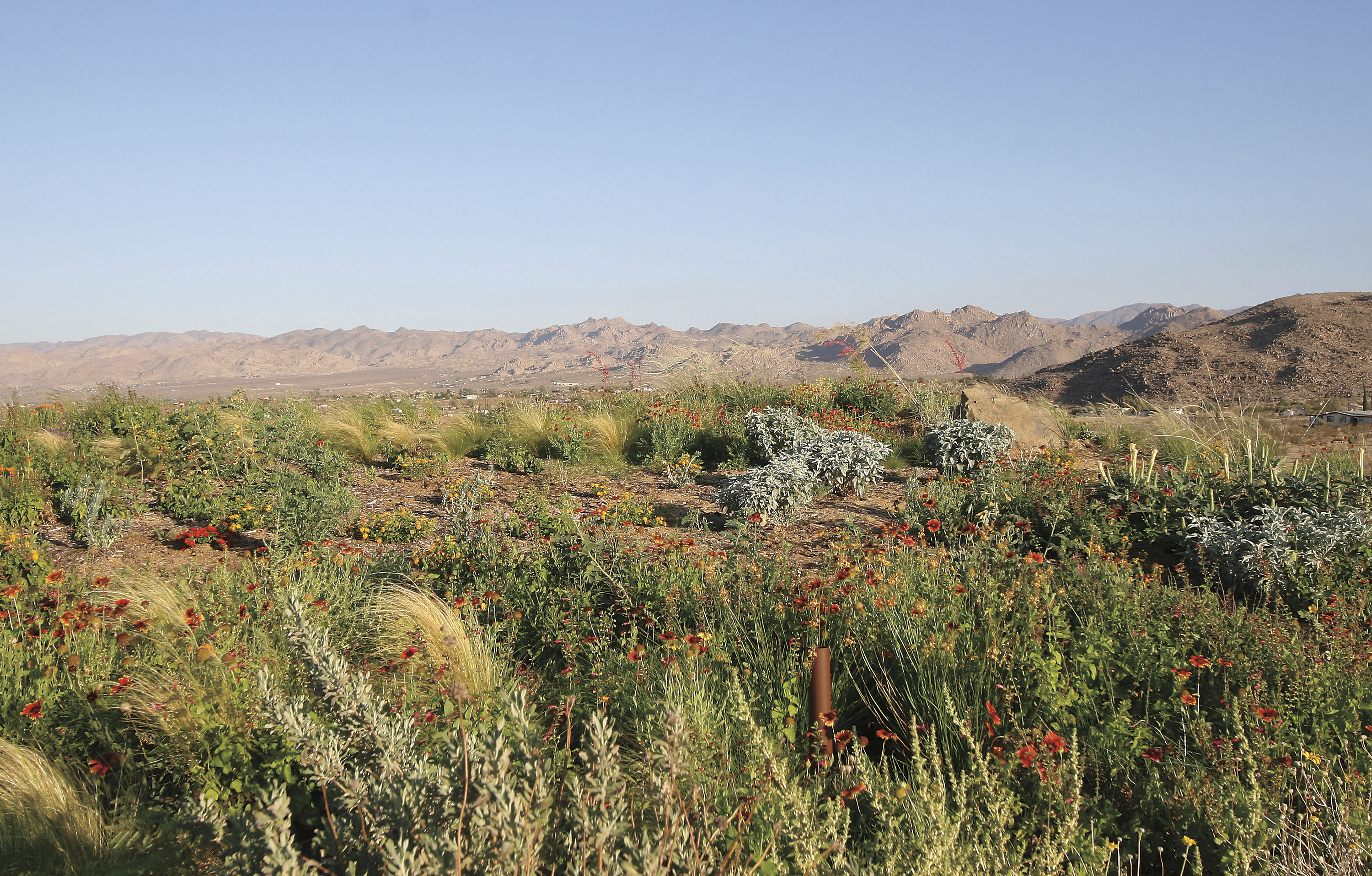
No Comments